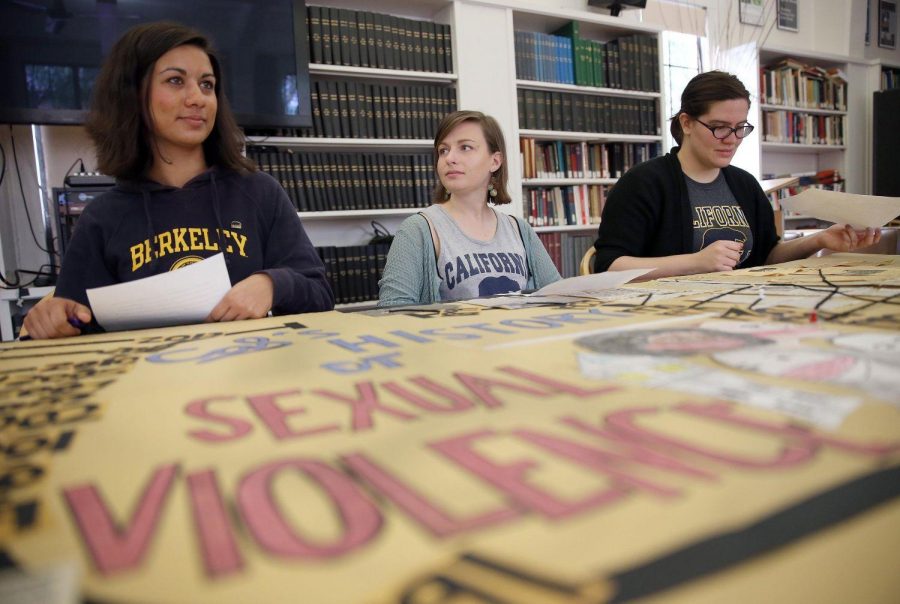Catcalls common for women, men
September 14, 2014
It’s not unusual for strangers to catcall Katie Watson during her daily run through Schenley Park.
Watson, a sophomore finance major, was crossing the street when a man appeared next to her. He began running beside her and asked, “Can I run with you next time?”
Watson was confused but decided to keep her headphones in and continue running.
She said people on the street make comments directed at her on over half of her daily runs.
“Can’t I just run? I’m wearing a tank top because it’s hot out,” she said when recalling the incident.
And, according to a recent study, Watson’s experience isn’t uncommon.
The Stop Street Harassment organization, based in Reston, Va., conducted and released a report this spring that found 65 percent of women and 25 percent of men experience some type of street harassment at some point in their lives.
Julie Beaulieu, a gender, sexuality and women’s studies professor, related street harassment to gender norms.
“That’s the thing about gender: Logics of masculinity, [which] read ‘catcalling’ as harmless and as par for the course for men, allow gender norms to corrupt our sense of right and wrong,” she said. “Explanations routinely use gender as a way to excuse the blatant, public maltreatment of people because of their identity.”
Street harassment is “threatening and dehumanizing,” Beaulieu said, and relateable to everyone regardless of experience or gender.
Stephen Kraus, a junior information science major, said he thinks that the culture of masculinity that Beaulieu referred to is “a perpetuated idea and does not accurately represent how most guys behave.”
“There are some guys out there who treat women inappropriately, and every time one of those assholes shouts a catcall across Forbes Avenue, it makes all of the guys who actually respect women look bad,” he said.
Holly Kearl, founder of Stop Street Harassment, was a part of the team that conducted the study. According to Kearl’s personal website, she is an expert on the topic of gender-based violence, has served as a consultant for the United Nations and is an adjunct professor at George Mason University.
“I think it speaks to how normalized street harassment is, that perhaps women didn’t remember or didn’t identify incidents that had happened to them as harassment,” Kearl said.
Street harassment is not specific to women. Kraus said he’s experienced it, too.
Kraus and his roommates were walking in South Oakland when a car drove past them. The window was rolled down, and a passenger called out, “Nice boyfriend,” followed by anexpletive.
Like Kraus, Amanda Philbrick said she’s encountered street harassment in Oakland. Last year, Philbrick lived in Lothrop Hall and was walking home at night when a man sitting on a bench called out to her.
“Rose for the beautiful girl?” the man called to her. He then called out to her about five more times.
“I just walked away, but it made me feel uncomfortable and kind of scared,” Philbrick, a junior business major, said.
Two-thirds of the harassed women and half of the harassed men involved in the Stop Street Harassment study said they were “very or somewhat concerned” that the harassment could escalate into something more dangerous.
Stop Street Harassment hopes to give people worldwide a platform to share their stories on the organization’s website to raise awareness of how familiar the issue can be, according to Kearl.
The group also organizes International Anti-Street Harassment Week each spring, runs a blog correspondence program and maintains a Safe Public Spaces Mentoring site, Kearl said.
Beaulieu pointed to student organizations to help students combat fearful feelings.
“Both the Campus Women’s Organization and the Rainbow Alliance are committed to social justice, to making people feel safe on campus and to creating events that help people flourish,” Beaulieu said.
Kraus said this is an issue that can be overcome.
“We’ve established gender equality as an ideal, and I believe we’ve come a long way in terms of seeing both genders as equals,” he said. “However, there’s still a lot of work to be done.”








